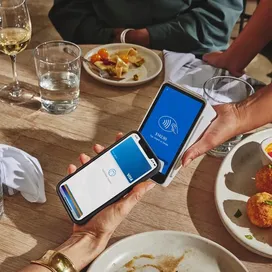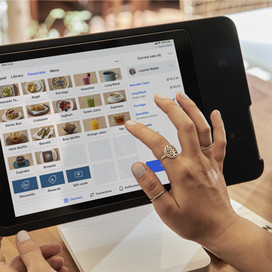Amuro is a special venue. If you thought you had walked into an izakaya on the back streets of Tokyo, you wouldn’t be far off. Tucked away on a quiet street in Sydney’s Darlinghurst, this cozy 20-seater saké bar exudes an inviting warmth that instantly puts you at ease.
Creating the space
The concept for Amuro was something that had been swimming around in Co-owner Kei Tokiwa’s mind for a while (amongst others), but when he saw the location, it all started to come together. He approached his business partner Joy Liu with an idea that was quite personal to him – a saké bar that feels like a small nomiya or izakaya, inspired by the manga (and now TV series) Midnight Diner.
“What drew me to Midnight Diner was the fact that it was more about community. You get the characters that come in again and again, and they start talking to each other, and I really wanted to create that experience here.”
With this reference in mind, Kei approached architect Matt Darwon (behind the design of spaces like Firedoor, Aalia Restaurant, and Itō) to fit out the 43m2 space, and Matt jumped at the opportunity.


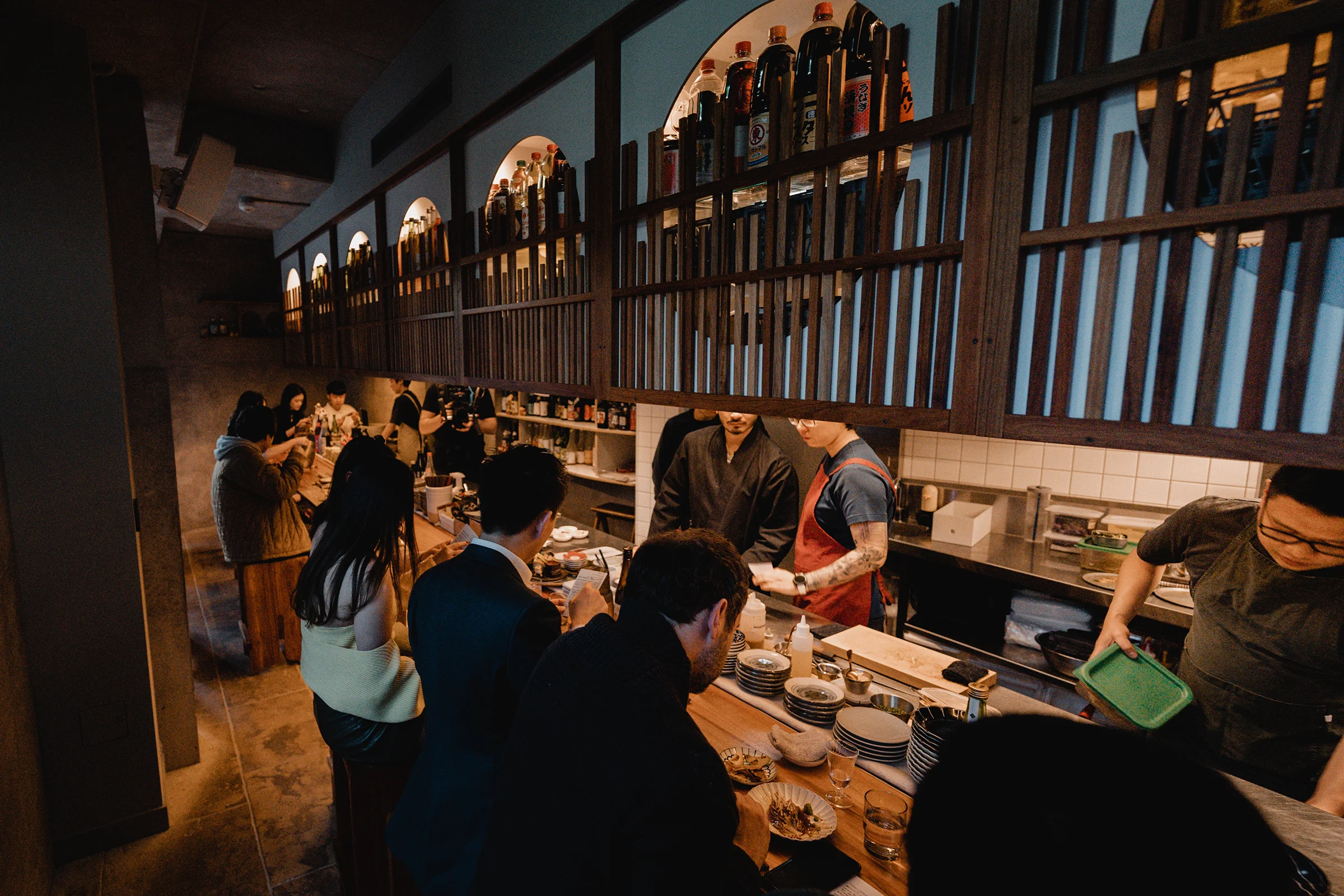
“We ended up with a design that’s quite minimalistic, and we want to create something that sort of ages well. So we’re using beautiful blackwood timber that contrasts with our concrete walls. And we also wanted to create an open space so that the guests can see everything that we do so we have nothing to hide, which I feel gives this nice warmth of hospitality and also builds that trust that I think guests are really looking for in this current market.”
When it came to point of sale systems that would work in this space, Kei wanted something that would match the aesthetic of the venue. The team uses Square Terminal (housed in a sleek bamboo box) for tableside payments.
What we love about Square is they’re very slim, sleek machines. They’re well-designed and really easy to use, which seamlessly blends into our environment rather than something that stands out and takes attention away from what we’re really doing.”
Kei Tokiwa → Co-owner

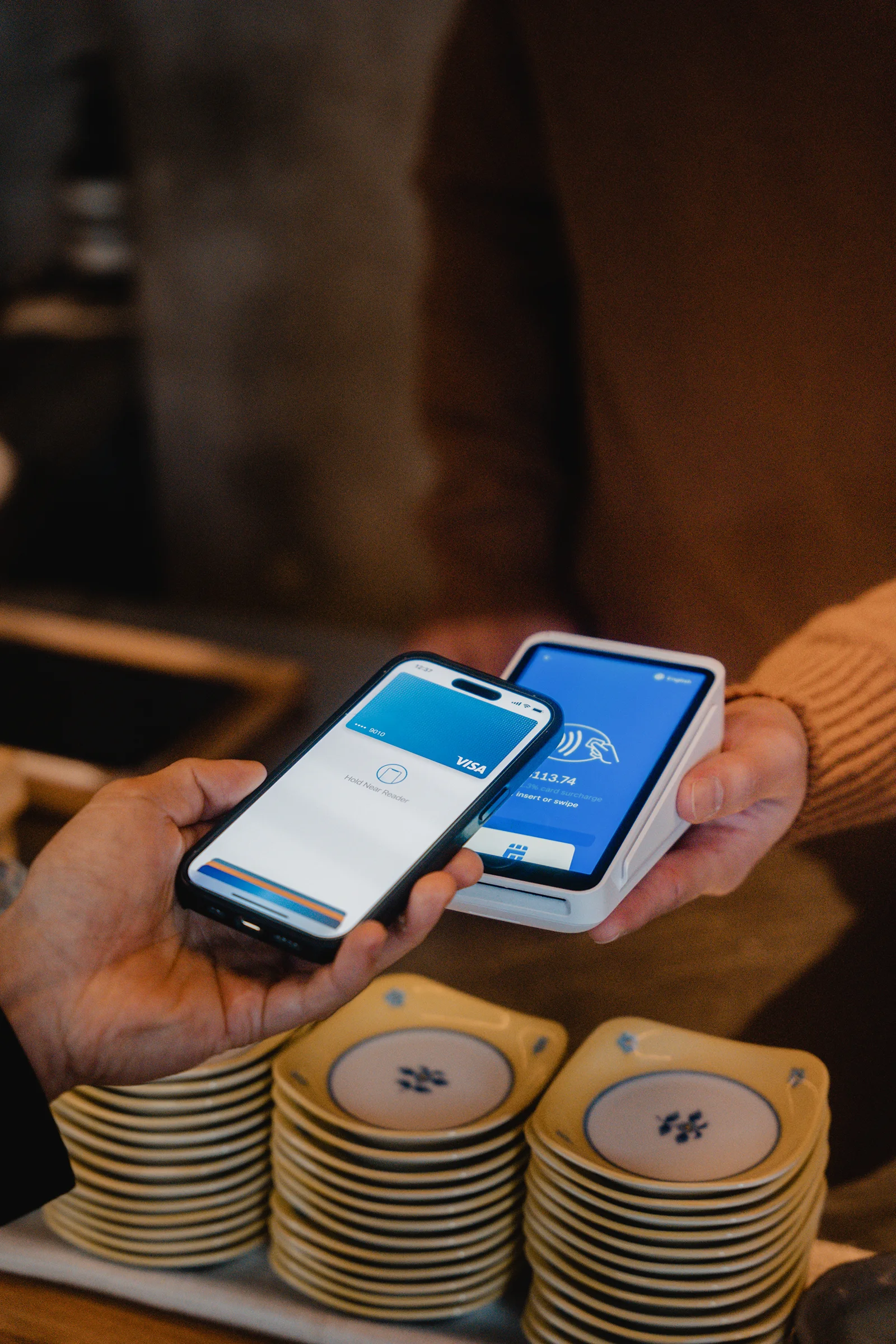

From rice fields to saké
Kei grew up with his paternal grandmother in a small village where they grew rice. “As a young kid, I have fond memories of waking up in the morning and helping her pick this weed, pick that weed.”
When he turned 8, he had the opportunity to come to Australia. Thinking it would be a fun adventure, he casually said bye to his grandmother and hopped on a plane to Sydney. Little did he know that would be the last time he saw her.
His mother hails from Okinawa, but he was separated from her when he was quite young. Later in his adult years, Kei ended up living and working in Tokyo, before returning to Australia.
Making hospitality personal
Amuro is almost deliberately hard to find – there’s no big neon sign, and it’s at the base of a commercial building, almost a hole-in-the-wall. Kei and Joy want you to discover the venue. But once you enter, it’s a unique experience.
“You have this concept in Japanese called ‘omotenashi’, which is essentially a very personalised hospitality experience. Because we only have around 20 seats, that gives that almost one-to-one experience with the customer. Then you really get to know the customer, especially when they come back again and again.”
What we wanted to create is something that’s a bit more slower dining where the guests have the opportunity to speak to the staff, speak to each other, and build onto those relationships.”
Kei Tokiwa → Co-owner

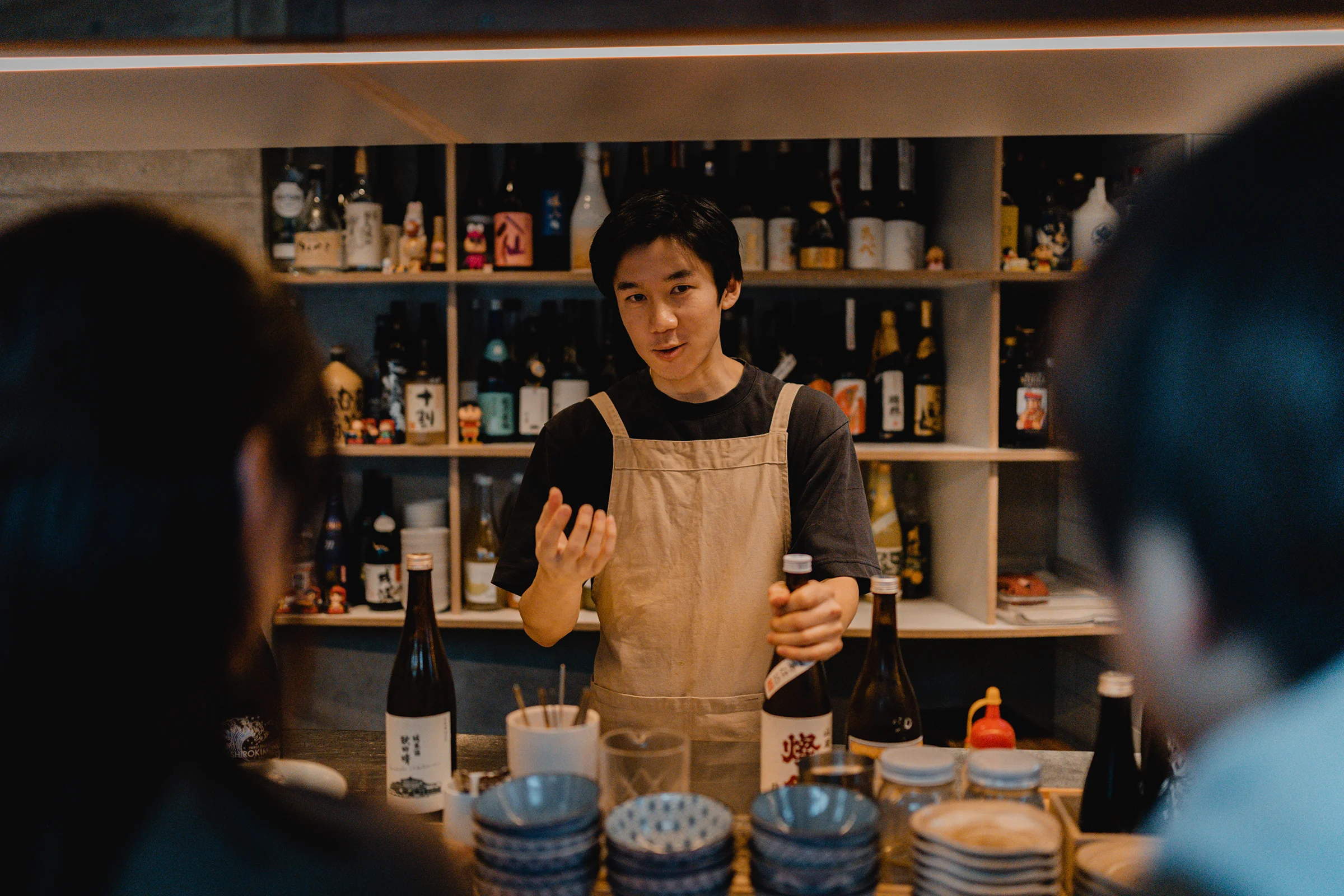
There are times where you will find a line of people huddled outside waiting for a table. But there are also times when you can walk in and get a seat straight away. With so few seats, optimising their team is crucial. “Square Dashboard gives us data and insight on when our customers spend the most or spend the least. That helps us adjust our roster accordingly, which overall saves on our operating costs.”
A world of saké
Aussies, and particularly Sydneysiders, are very familiar with wine – not just the different types of grapes, but the different brands and winemakers and batches. Cocktails too – the exact liquors (and the proportions) that go in a martini, or a negroni. Saké? Not so much. The rice-based drink (called ‘Nihon-shu’ in Japan) has three other key ingredients: koji (fermented rice grains), the yeast (that gives, as Kei says, “endless possibilities in terms of the flavor profiles”), and of course, a good source of water.
“We try to bring in small producer sakés rather than the more commercial breweries. We always find that the breweries that produce in small quantities tend to sort of be on top of their quality and their artisanal craft. It is a relatively small market at the moment, but we do see there is a growing group of people that have come to appreciate drinking saké on top of drinking wine rather than drinking one or the other.”
Because of this, Amuro has no saké menu. “The idea is the guest would come in, converse with us about what they like to have, and we try our best to curate what’s great for them on the night.”
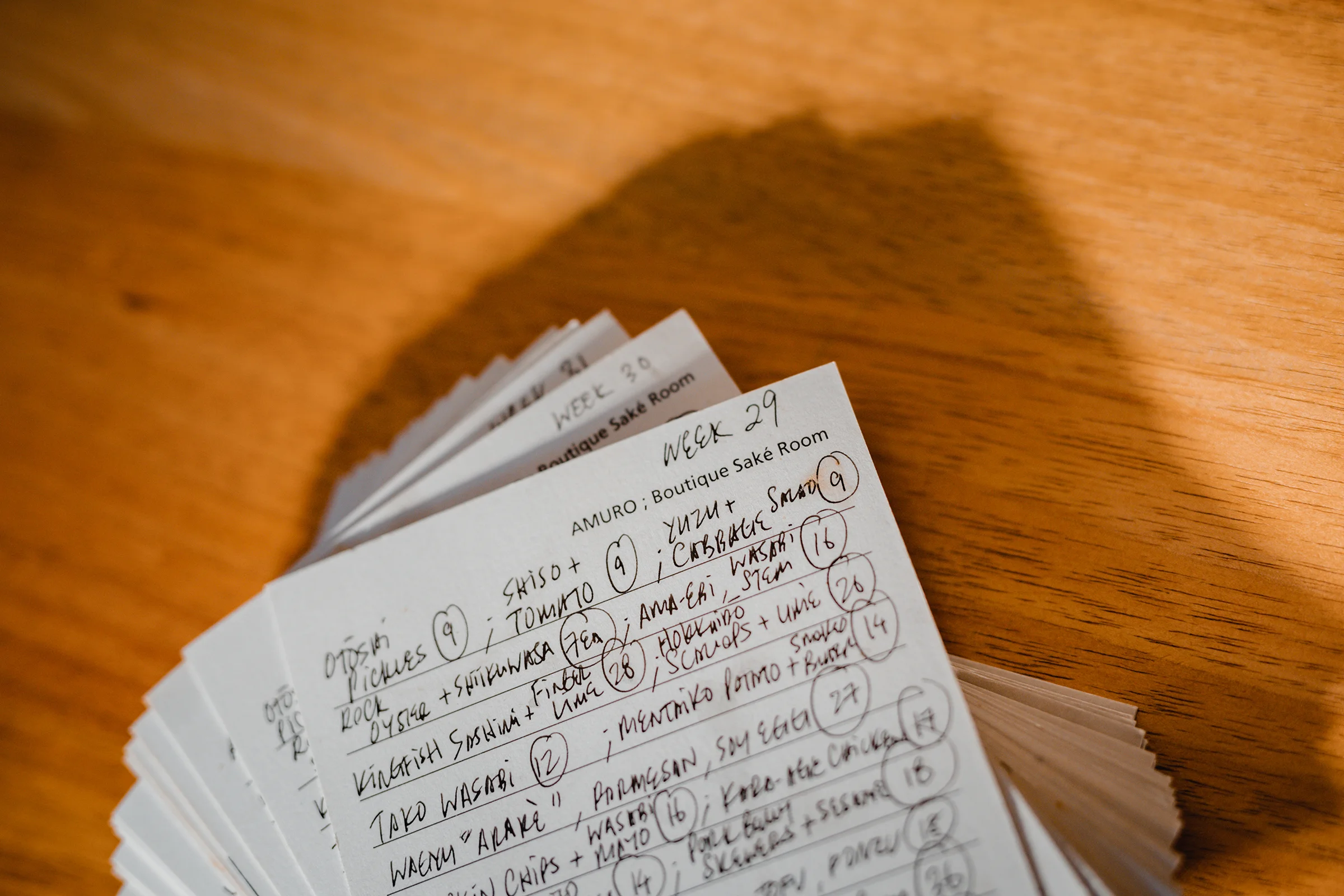


Saké is such a key part of Amuro that the food menu is built around the sakés each week. “For example, ‘this clean fresh saké is perfect for fish.’ And then we think backwards from there and we go, okay, let’s get the fish. We test it out in the kitchen and then when we get a dish. That’s the idea of getting 80% of the menu to be a bit more traditional, a bit more regional, and then we put our 20% in to modernise the taste and flavors as well, just so it gives the proper respect that the saké deserves to go with the food.”
The food menu changes often based on available produce, which Kei handwrites on the back of custom postcards. This also means he needs to update his point of sale frequently. “In a restaurant environment, you have to be quite accurate, fast paced, and you just want things to go smoothly. With Square Dashboard, we can change things on the fly quite seamlessly, like adding an item, editing an item, and changing prices.”
Less blockbuster, more indie film
What the team has created at Amuro is truly something special. The combination of the minimalist, open space, the warm tones, and the way you’re encouraged to talk to the staff (and the other patrons) means you can walk out with new friends you never knew you needed.
Building Amuro, I wanted to create a space that’s giving homage to Japanese culture. The idea is to create something that’s a bit cozy, intimate, and warm. In essence, a love letter to Japan.”
Kei Tokiwa → Co-owner
![]()


